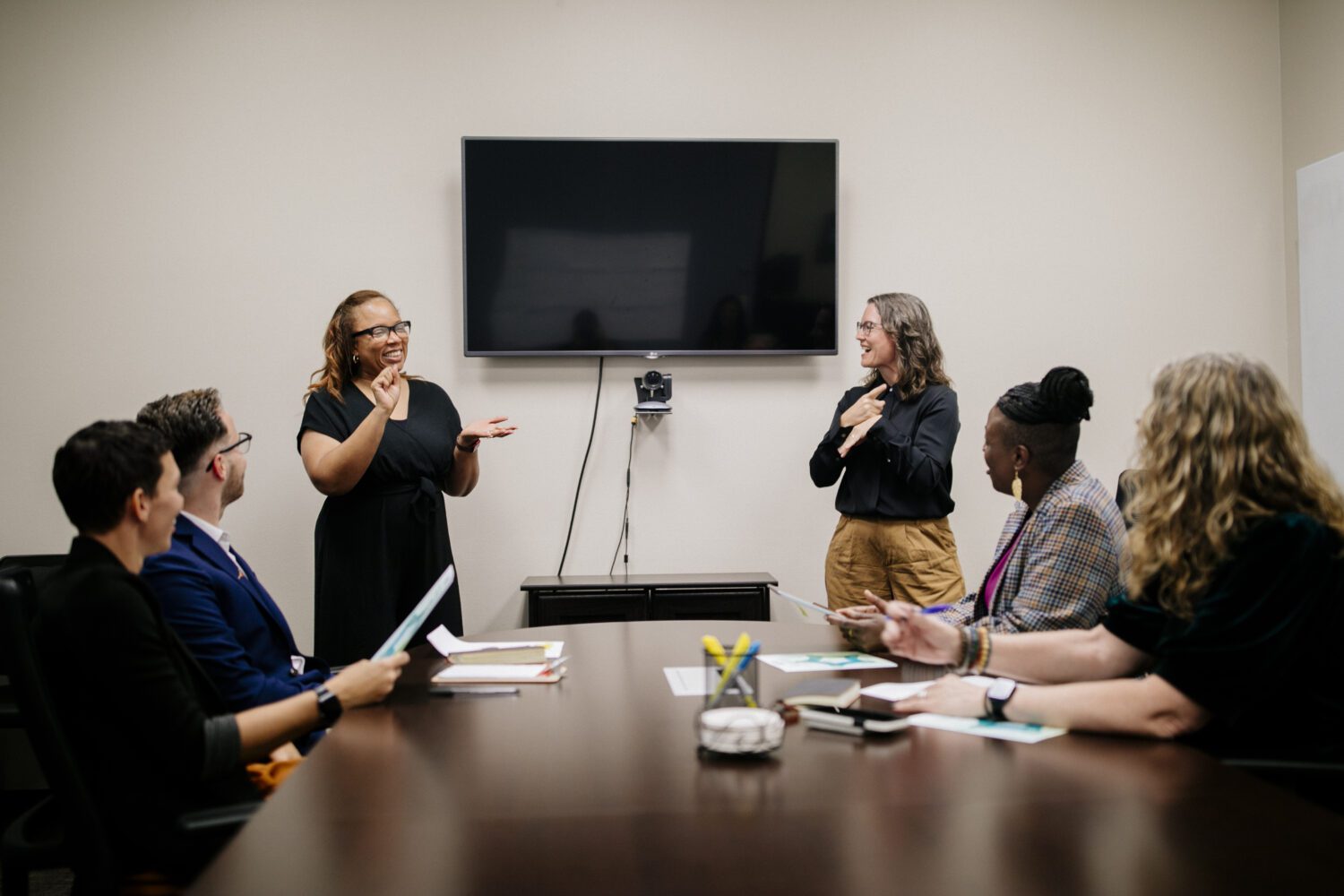Like all OSEP technical assistance and dissemination centers, the National Deaf Center on Postsecondary Outcomes strives to provide the highest-quality assistance by incorporating practices that are “evidence-based”—a term that means they have been shown to be the most effective and should be prioritized for use.
However, for the deaf population, “evidence-based” is a term that often falls short.
In a new report, “Evidence-Based Technical Assistance,” the National Deaf Center outlines its unique approach to expand the concept of “evidence-based” for the deaf community, providing a model for other technical assistance and research centers.
“We have deeply considered what constitutes evidence, especially as it relates to marginalized communities such as deaf people,” said Stephanie Cawthon, Ph.D., Director of the National Deaf Center and Professor at the College of Education at the University of Texas at Austin. “As an organization led and staffed by deaf researchers and practitioners, the National Deaf Center seeks a wide variety of perspectives, investigates across all sources, considers context and other factors, and determines a comprehensive practice that is the most useful, relevant, and innovative based on the best available evidence.”
The new report addresses:
-
How many practices don’t meet the criteria of “evidence-based” for deaf populations;
-
Why work that is done with marginalized communities must include cultural competency and other contexts;
-
What other factors, resources, and “best available evidence” the National Deaf Center integrates to provide the most useful and relevant information; and
-
Examples of evidence-based resources at NDC and how they are developed.
In its analysis of how to improve outcomes for deaf people after high school, the National Deaf Center found that many practices do not meet the criteria for being evidence-based because few researchers are trained in how to conduct valid and reliable research with deaf populations. Most of the available research focuses one children and not young adults, and few studies are large enough to establish the effectiveness of a specific intervention or practice.
The National Deaf Center’s approach to technical assistance focuses on the broader concept of “best available evidence,” integrating evidence-based practices, current research, legislation and professional guidelines, outcomes data, case examples, professional experiences, and insights from deaf populations.
Examples of National Deaf Center practices that utilize this approach and are integrated into the delivery of technical assistance include interactive gaming platforms for youth developing self-determination skills, community-based conversations as a way to identify local needs and generate solutions, and just-in-time learning experiences for professionals.
“This multi-pronged and strengths-based approach helps guide the National Deaf Center and can serve as a model to others in the field to improve current practices, identify innovative methods, and reduce systemic barriers to support deaf success,” said Cawthon.
Read the full report.









